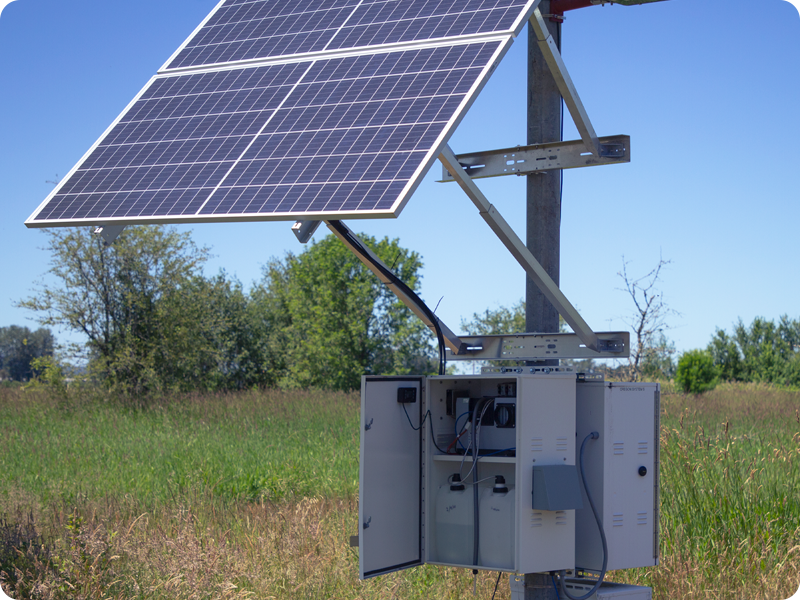
Photovoltaic
A solar cell, or photovoltaic cell, is a device that converts light into electric current using the photovoltaic effect.
Photovoltaic (PV) systems use solar panels, either on rooftops or in ground-mounted solar farms, converting sunlight directly into electric power. As of 2022 over 90% of the market is made from crystalline silicon. The array of a photovoltaic system, or PV system, produces direct current (DC) power which fluctuates with the sunlight's intensity. For practical use this usually requires conversion to alternating current (AC), through the use of inverters. Multiple solar cells are connected inside panels. Panels are wired together to form arrays, then tied to an inverter, which produces power at the desired voltage, and for AC, the desired frequency/phase.
Other types of Photovoltaic systems are Thin-film solar cells and Perovskite solar cells.

